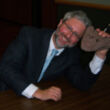The story of the human body: evolution, health, and disease
Description
More Details
Table of Contents
From the Book - First edition.
Excerpt
Similar Titles From NoveList
Similar Authors From NoveList
Published Reviews
Choice Review
Biology professor Lieberman (Harvard) has written a comprehensive, compelling book about the human body's dynamic evolution. The author carefully explores human form and function development along with health and concomitant diseases over millions of years, including humankind's continuing modifications. He provides scholarly research data from related disciplines, particularly fossil aspects and molecular levels of development. The book consists of three evolutionary components: "Apes and Humans," "Farming and the Industrial Revolution," and "The Present, the Future." Lieberman raises analytical questions about earlier relatives and the first Homo sapiens, dietary (metabolic) variations, and global migrations. He distinguishes between human and concomitant cultural evolution. For example, scientific/technological advances prompted the development of modern affluences and conveniences and assisted expanding world populations to live longer. Widespread human health issues, such as obesity, type 2 diabetes, heart ailments, and cancers became prevalent in the past few hundred years. Lieberman also describes "mismatch" disorders and "dysevolution." The concluding chapter offers approaches for the human body's evolution in the future. Preventative, intelligent, individual, societal, and governmental modifications in modern lifestyles, including physical exercise and dietary changes, might offset impending deleterious patterns. Graphics and extensive chapter notes enhance this outstanding single-volume treatment of a complex topic. Summing Up: Essential. All levels/libraries. J. N. Muzio emeritus, CUNY Kingsborough Community College
Booklist Review
Like it or not, we are slightly fat, furless, bipedal primates who crave sugar, salt, fat, and starch. Harvard professor Lieberman holds nothing back in his plea that people listen to the story of human evolution consisting of five biological transformations (walking upright, eating a variety of different foods, accumulating physical traits aligned to hunting and gathering, gaining bigger brains with larger bodies, and developing unique capacities for cooperation and language) and two cultural ones (farming and reliance on machines). Unfortunately, human beings now create environments and presently practice lifestyles that are clearly out of sync with the bodies they've inherited. This mismatch results in myriad problems, including Type 2 diabetes, myopia, flat feet, and cavities. Lieberman cleverly and comprehensively points out the perils of possessing Paleolithic anatomy and physiology in a modern world and bemoans just how out of touch we have become with our bodies. Natural selection nudges all life-forms toward optimality rather than a state of perfection. If we want to continue our phenomenal run as a species, it is essential to understand (and embrace) our evolutionary legacy.--Miksanek, Tony Copyright 2010 Booklist
Publisher's Weekly Review
In thoroughly enjoyable and edifying prose, Lieberman, professor of human evolution at Harvard, leads a fascinating journey through human evolution. He comprehensively explains how evolutionary forces have shaped the human species as we know it, from the move to bipedalism, and the changes in body parts-from hands to feet and spine-that such a change entailed, to the creation of agrarian societies, and much more. He balances a historical perspective with a contemporary one-examining traits of our ancestors as carefully as he looks to the future-while asking how we might control the destiny of our species. He argues persuasively that "cultural evolution is now the dominant force of evolutionary change acting on the human body," and focuses on what he calls "mismatch diseases" that are caused by lack of congruence between genes and environment. Since the pace of cultural evolution has outstripped that of biological evolution, mismatch diseases have increased to the point where most of us are likely to die of such causes. Lieberman's discussion of type 2 diabetes, heart disease, and breast cancer are as clear as any yet published, and he offers a well-articulated case for why an evolutionary perspective can greatly enrich the practice of medicine. Agent: Max Brockman, Brockman Inc. (Oct.) (c) Copyright PWxyz, LLC. All rights reserved.
Library Journal Review
Lieberman (biology, Harvard; The Evolution of the Human Head) here traces the physical and social evolution of human beings, arguing that the rapid changes brought about by the Agricultural and Industrial revolutions have created environmental conditions for which our bodies are not ideally adapted. Contending that humans have become ill suited for the world in which we live-one of plentiful, highly processed food and labor-saving devices that reduce the need for strenuous physical activity-Lieberman proposes that these circumstances have led to chronic but avoidable diseases such as type 2 diabetes. While the book makes its points powerfully and convincingly, it is occasionally numbingly redundant and, indeed, sometimes seems to chide humans for being human. Seasoned narrator Sean Runnette gives a solid and engaging performance. VERDICT Optional; for public libraries where there is demand.-Forrest E. Link, Coll. of New Jersey, Ewing Twp. (c) Copyright 2014. Library Journals LLC, a wholly owned subsidiary of Media Source, Inc. No redistribution permitted.
Kirkus Book Review
Six million years of biological evolution have produced a human body ill-adapted to the diets and lifestyles that cultural evolution has wrought since modern humans emerged. That is the core message of this massive review of where we came from and what ails us now. Lieberman (Human Evolutionary Biology/Harvard Univ.; The Evolution of the Human Head, 2011, etc.) writes authoritatively about the fossil record, crediting bipedalism as the driver that freed hands to learn new skills, enabled foraging for diverse diets and chasing prey, and ultimately built bigger brains. In time, humans spread across the globe in hunter-gatherer groups. Thus we remained until the agricultural and industrial revolutions spurred population growth, changed diets, and introduced new infectious and chronic diseases--while little altering our hunter-gatherer anatomy and physiology. Lieberman examines energy balance--calories taken in vs. calories expended--and good shape. Analyzing today's creature comforts, processed food (with addictive amounts of sugar, salt and fat) and lack of exercise, it is no wonder we are seeing rises in obesity and risks for heart disease, diabetes, osteoporosis and the like. Lieberman calls these diseases of "mismatch" (of biological evolution and culture) and medicine's emphasis on treating symptoms, "dysevolution," which means perpetuating the diseases instead of preventing them. The repeated emphasis on all the bad things humans do is wearying. By no means does Lieberman discount all the good that modern society has achieved, but that message is nearly drowned by the constant admonition to do right by your body. Alas, he is the first to admit that changing human behavior is notoriously hard. At best, he offers a "soft paternalism"--e.g., government controls of children's environments (more physical education and better lunches) and taxing the unhealthy choices of adults. Readers have likely heard this song before but perhaps not so exhaustively and well-referenced as in Lieberman's opus. Would that industry and governments take heed.]] Copyright Kirkus Reviews, used with permission.
Booklist Reviews
Like it or not, we are slightly fat, furless, bipedal primates who crave sugar, salt, fat, and starch. Harvard professor Lieberman holds nothing back in his plea that people listen to the story of human evolution consisting of five biological transformations (walking upright, eating a variety of different foods, accumulating physical traits aligned to hunting and gathering, gaining bigger brains with larger bodies, and developing unique capacities for cooperation and language) and two cultural ones (farming and reliance on machines). Unfortunately, human beings now create environments and presently practice lifestyles that are clearly out of sync with the bodies they've inherited. This mismatch results in myriad problems, including Type 2 diabetes, myopia, flat feet, and cavities. Lieberman cleverly and comprehensively points out the perils of possessing Paleolithic anatomy and physiology in a modern world and bemoans just how out of touch we have become with our bodies. Natural selection nudges all life-forms toward optimality rather than a state of perfection. If we want to continue our phenomenal run as a species, it is essential to understand (and embrace) our evolutionary legacy. Copyright 2013 Booklist Reviews.
Library Journal Reviews
Chair of the Department of Human Evolutionary Biology at Harvard, Lieberman gracefully combines paleontology, anatomy, physiology, and experimental biomechanics to clarify how the human body has evolved, from the emergence of bipedalism to the growth of modern cultural abilities. Now, he shows, we are troubled by dysevolution as our long-evolved bodies fail to fit the contemporary world and respond by developing diseases like diabetes.
[Page 61]. (c) Copyright 2013. Library Journals LLC, a wholly owned subsidiary of Media Source, Inc. No redistribution permitted.Publishers Weekly Reviews
In thoroughly enjoyable and edifying prose, Lieberman, professor of human evolution at Harvard, leads a fascinating journey through human evolution. He comprehensively explains how evolutionary forces have shaped the human species as we know it, from the move to bipedalism, and the changes in body parts—from hands to feet and spine—that such a change entailed, to the creation of agrarian societies, and much more. He balances a historical perspective with a contemporary one—examining traits of our ancestors as carefully as he looks to the future—while asking how we might control the destiny of our species. He argues persuasively that "cultural evolution is now the dominant force of evolutionary change acting on the human body," and focuses on what he calls "mismatch diseases" that are caused by lack of congruence between genes and environment. Since the pace of cultural evolution has outstripped that of biological evolution, mismatch diseases have increased to the point where most of us are likely to die of such causes. Lieberman's discussion of type 2 diabetes, heart disease, and breast cancer are as clear as any yet published, and he offers a well-articulated case for why an evolutionary perspective can greatly enrich the practice of medicine. Agent: Max Brockman, Brockman Inc. (Oct.)
[Page ]. Copyright 2013 PWxyz LLC
































